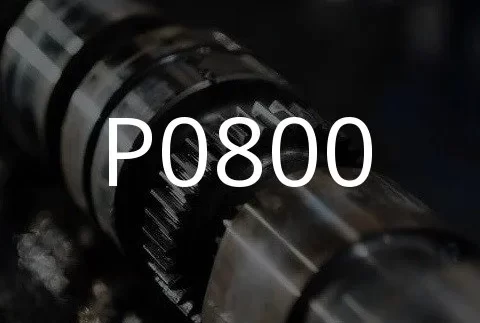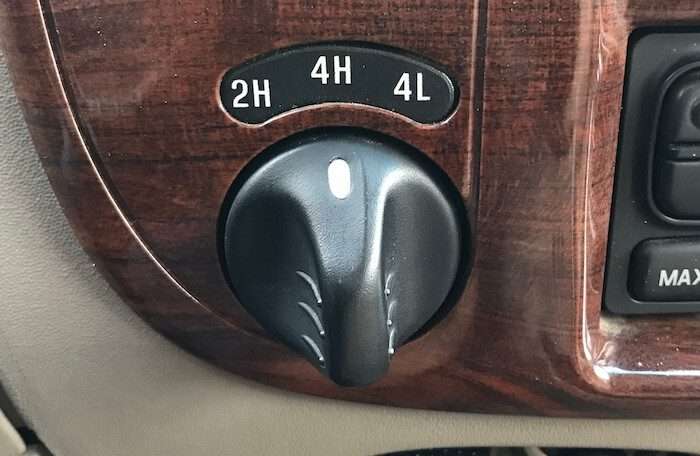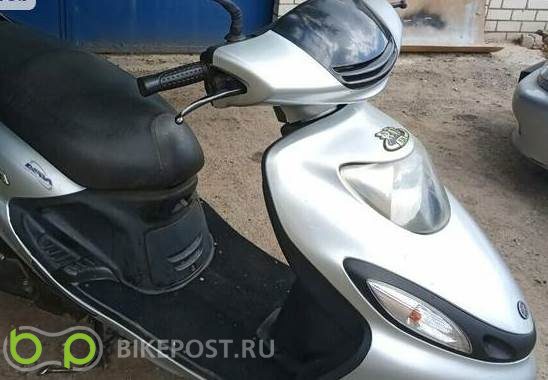
P0800 Transfer Case Control System (MIL Interrogation) - Circuit Malfunction
Content
P0800 – OBD-II Trouble Code Technical Description
Trouble code P0800 indicates a faulty transfer case control system circuit (MIL query)
What does the fault code mean P0800?
Trouble code P0800 indicates a problem with the transfer case control system circuit. This means that the powertrain control module (PCM) has received a fault signal in the transfer case control system, which may require activation of the malfunction indicator lamp (MIL).
The PCM uses information from various engine, transmission and transfer case sensors to develop the automatic transmission's shift strategy. The transfer case is responsible for transferring power from the engine to the front and rear differentials, respectively.

Possible reasons
Possible reasons for DTC P0800 may include the following:
- Malfunction in the transfer case: Problems with the transfer case itself, such as damage to the shift mechanism or improper operation of the locking mechanism, can cause this code to appear.
- Sensor Issues: A malfunction of the sensors responsible for communicating transfer case status to the PCM, such as the position sensor or speed sensor, can cause this code to appear.
- Electrical problems: Poor connections, breaks, or shorts in the electrical circuit associated with the transfer case control system can also cause trouble code P0800.
- Software problems: Faults or errors in the PCM software responsible for controlling the transfer case may cause this code to appear.
- Problems with gear shift mechanisms: Defects or wear in the transfer case shift mechanisms can cause improper operation and result in DTC P0800.
These reasons require additional diagnostics to accurately determine the root of the problem.
What are the symptoms of a fault code? P0800?
Possible symptoms for DTC P0800:
- Gear shifting problems: The driver may notice that gear shifting does not occur correctly or is delayed.
- Unusual sounds or vibrations: There may be unusual sounds or vibrations when the vehicle is driven due to the operation of the transfer case.
- Gear indicator malfunction: The gear indicator on the instrument panel may show incorrect data or flash, indicating problems with the transfer case.
- Malfunction indicator light (MIL) appears: If the PCM detects a problem in the transfer case control system, the malfunction indicator on the instrument panel may be activated.
- Malfunctioning behavior of the car in various conditions: The vehicle may exhibit unusual behavior when driving in different modes (eg, forward, reverse, four-wheel drive), which may be due to a problem in the transfer case.
- Increased fuel consumption: An improperly functioning transfer case can result in increased fuel consumption due to improper gear shifting and inefficient power transfer.
If you notice any of these symptoms, it is recommended that you contact a qualified mechanic for diagnosis and repair.
How to diagnose a fault code P0800?
The following steps are recommended to diagnose DTC P0800:
- Checking the error code: Using an OBD-II scanner, read the P0800 trouble code and any additional codes that may be stored in the PCM. This will help identify the area where the problem may be.
- Checking electrical connections: Check all electrical connections, wires and connectors associated with the transfer case control system. Look for visible damage, oxidation or breaks.
- Checking sensors: Check the operation of the sensors responsible for communicating transfer case status to the PCM, such as the position sensor and speed sensor. Make sure they work correctly.
- Transfer case diagnostics: Carry out a thorough diagnosis of the transfer case, including checking the gear shift mechanisms, condition of the transmission oil, fluid level and other components.
- PCM Software Check: Check the PCM software for updates or errors that may cause the P0800 code to appear.
- Real world testing: After completing all the above steps, test drive the vehicle to check its behavior and ensure that the problem has been resolved.
- Professional diagnostics: In case of difficulties or lack of experience, it is recommended to contact a qualified mechanic or auto repair shop for additional diagnostics and repairs.
Remember that successful diagnosis and repair may require experience and specialized equipment, so don't hesitate to seek professional help.
Diagnostic errors
When diagnosing DTC P0800, the following errors may occur:
- Insufficient diagnostics of the transfer case: An error may occur if the diagnosis is limited to only checking electrical connections or sensors, without taking into account the condition of the transfer case itself.
- Ignoring additional error codes: Sometimes diagnostics focus only on the main P0800 code, ignoring other related error codes that can help find the source of the problem.
- Incorrect interpretation of sensor data: An error may occur if the data received from the sensors is incorrectly interpreted or analyzed incorrectly.
- Incorrect PCM software diagnosis: If the problem is related to the PCM software, incorrect diagnosis or interpretation of the software codes may result in an incorrect output.
- Skip test drive: Not conducting a test drive after diagnosis may result in some problems being missed, especially those that only appear under actual vehicle operating conditions.
- Incorrect component replacement: An error may occur if components are replaced without performing a full diagnosis, which may result in unnecessary costs for unnecessary repairs.
It is important to use caution and diligence when diagnosing the P0800 trouble code to avoid incorrect repairs or undiagnosed problems.
How serious is the fault code? P0800?
Trouble code P0800 indicates a problem in the transfer case control system, which can cause the transmission to not operate properly. Depending on the specific nature of the problem, the severity of this code may vary.
In some cases, the problem may be minor and may not cause serious consequences to the safety or performance of the vehicle. However, in other cases, a malfunction in the transfer case control system can lead to serious problems such as loss of transmission control, possible damage to the transfer case, or even an accident.
Therefore, although in some cases a P0800 code may not pose an immediate safety risk, it is always recommended to have a qualified mechanic or auto repair shop diagnose and repair it to prevent potential problems and ensure the safety and reliability of your vehicle.
What repair will help eliminate the code? P0800?
The repairs needed to resolve the P0800 trouble code will depend on the specific cause of the problem; there are several possible actions that may help:
- Checking and repairing electrical connections: Check all electrical connections, wires and connectors associated with the transfer case control system. If damage or broken wires are found, they should be replaced or repaired.
- Replacing sensors: If the problem is with sensors, such as the position sensor or speed sensor, replacing the faulty sensors may help resolve the problem.
- Transfer case diagnostics and repair: Perform a thorough inspection of the transfer case to identify any mechanical problems, such as damaged shift mechanisms or worn internal components. Once problems are identified, repair or replace parts.
- PCM Software Update: In some cases, the problem may be due to bugs in the PCM software. Updating the PCM software or firmware may help resolve such problems.
- Thorough diagnosis: Perform a thorough diagnosis of the entire transfer case control system to rule out other possible causes of the P0800 code.
It is important to understand that successfully resolving a P0800 code requires accurate diagnosis and proper identification of the source of the problem. If you do not have the experience or the necessary equipment, it is better to contact a professional mechanic or auto repair shop to perform diagnostics and repairs.
P0800 – Brand-specific information
Trouble code P0800 can be found in different brands of cars, but does not always have the same interpretation, decoding the P0800 code for some specific brands:
- Chevrolet, GMC, Cadillac, Buick: The transmission control system (TCM) has detected an error in the electrical circuit associated with the transfer case.
- Ford, Lincoln, Mercury: Transfer case control system, MIL request - electrical circuit malfunction.
- Toyota, Lexus, Scion: Transfer case control system, MIL request - electrical circuit malfunction.
- Honda Acura: Transfer case control system error.
- BMW, Mercedes-Benz, Audi, Volkswagen: Transfer case control system, MIL request - electrical circuit malfunction.
- Subaru: Transfer case control system, MIL request - electrical circuit malfunction.
- Hyundai: Transfer case control system, MIL request - electrical circuit malfunction.
- Nissan, Infiniti:Transfer case control system, MIL request - electrical circuit malfunction.
- Mazda: Transfer case control system, MIL request - electrical circuit malfunction.
These are common interpretations of the P0800 code for different makes of vehicles. It is important to remember that the exact meaning of the code may vary depending on the specific model and year of the vehicle. It is recommended to contact the repair manual or specialists for more accurate diagnosis and resolution of the problem.

